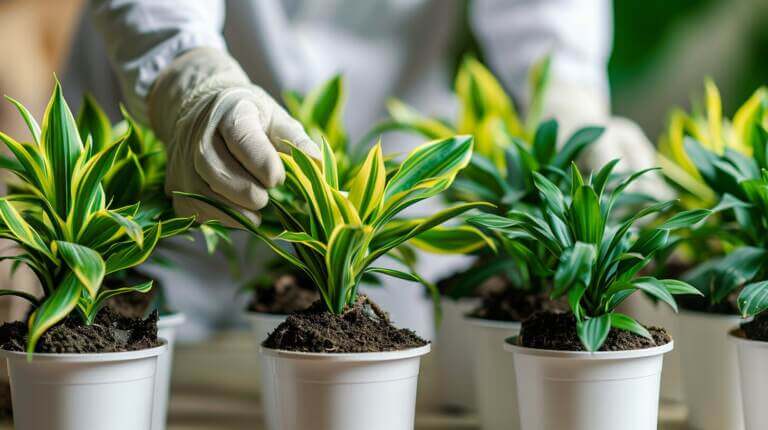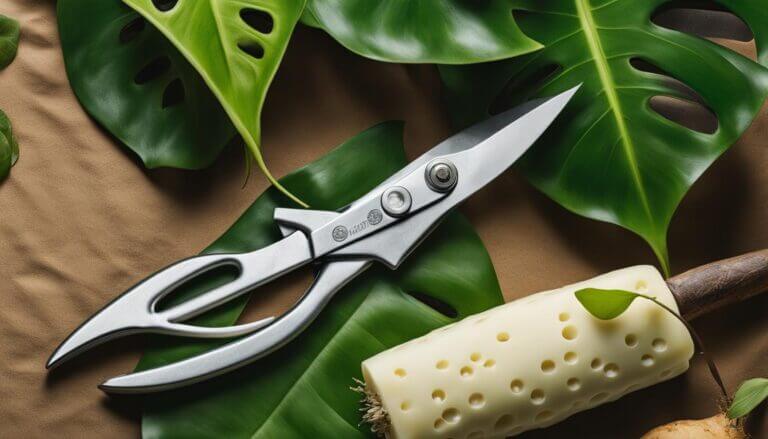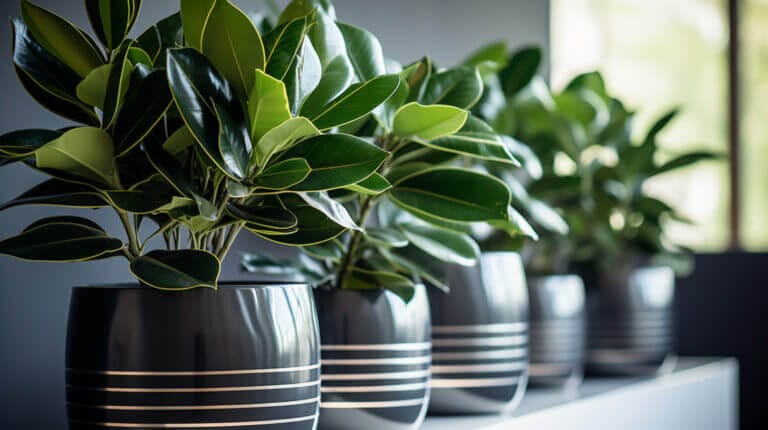Grow and Care for String of Pearls Plant(Senecio Rowleyanus) as Trailing Succulents
String of pearls, also known as Senecio Rowleyanus, is a beautiful and cascading succulent that can add a unique charm to any indoor setting. This plant grows quickly and is easy to propagate, making it an ideal choice for both indoor and outdoor cultivation. To properly care for string of pearls, there are a few key tips to keep in mind.
Key Takeaways:
- Growing string of pearls as trailing succulents adds a stunning visual appeal to any space.
- String of pearls can be grown both indoors and outdoors, but requires specific care depending on the environment.
- It is important to handle string of pearls with gloves as the sap is toxic to humans and pets.
- Proper light exposure and watering techniques are crucial for the health of the plant.
- String of pearls can be easily propagated through stem cuttings.
Should You Grow String of Pearls Indoors or Outdoors?
String of pearls, also known as Senecio Rowleyanus, is a versatile succulent that can be grown both indoors and outdoors, depending on your climate and personal preferences. Whether you choose to cultivate it as a houseplant or in your garden, string of pearls requires specific care to thrive.
Indoor cultivation of string of pearls is ideal for those living in colder regions or apartments with limited outdoor space. As a houseplant, it adds a unique touch of greenery and elegance to any indoor setting. Place it near a bright, east-facing window or a south/west-facing window with some distance to prevent sunburn. If your living space has low-light conditions, consider supplementing the light with artificial fluorescent lighting.
In contrast, string of pearls can also flourish outdoors in zones 9 and warmer. When grown outside, it should be positioned in a partially shaded spot to protect it from intense afternoon sun. Providing indirect morning sunlight is essential for its growth and overall health. However, if you live in a colder region, it’s best to grow string of pearls in a container that can be brought indoors during freezing temperatures to prevent frost damage.
Table: Pros and Cons of Growing String of Pearls Indoors and Outdoors
| Indoors | Outdoors | |
|---|---|---|
| Pros |
|
|
| Cons |
|
|
Is String of Pearls Toxic?
When it comes to caring for string of pearls, it’s important to be aware of its toxic nature. Both humans and pets should exercise caution when handling this plant. The sap of the string of pearls can cause skin irritation and dermatitis, so it’s advisable to wear gloves when touching or propagating the plant. Ingesting the plant can also lead to gastrointestinal symptoms, making it important to keep string of pearls out of reach of children and pets.
String of pearls contains certain compounds that can be harmful when ingested. These compounds can cause digestive issues, such as stomach upset, vomiting, and diarrhea. In more severe cases, ingestion of string of pearls can lead to more serious symptoms, including difficulty breathing or even organ failure. It’s crucial to seek immediate medical attention if you suspect ingestion or adverse reactions to the plant.
Precautions When Handling String of Pearls:
- Wear gloves when handling the plant to avoid skin irritation.
- Keep string of pearls out of reach of children and pets.
- If ingestion or adverse reactions occur, seek immediate medical attention.
| Common Symptoms of String of Pearls Toxicity: | Emergency Actions to Take: |
|---|---|
| Skin irritation | Wash the affected area with soap and water. Seek medical attention if symptoms worsen or persist. |
| Dermatitis | Remove any contaminated clothing and wash the affected area with soap and water. Apply a soothing lotion or cream. Seek medical attention if symptoms worsen or persist. |
| Gastrointestinal symptoms (vomiting, diarrhea) | If ingested, drink plenty of water to flush out the toxins. Seek immediate medical attention if symptoms worsen or persist. |
| Difficulty breathing | Seek immediate medical attention. Call emergency services if necessary. |
General Care for String of Pearls(Senecio Rowleyanus)
When it comes to caring for your string of pearls, there are a few key factors to consider: light, watering, and succulent-specific care. Providing the proper amount of light is crucial for the health and growth of your plant. Whether you choose to grow it indoors or outdoors, string of pearls thrives in bright, indirect sunlight. Aim for 6 to 8 hours of sunlight per day to ensure optimal growth.
When positioning your string of pearls indoors, place it near an east-facing window or a south/west-facing window with some distance to prevent sunburn. If natural light is limited, you can supplement with artificial fluorescent lighting to meet the plant’s light requirements. Avoid placing your plant in direct sunlight, especially during hot and desert-like conditions, as this can lead to sunburn and damage.
Proper watering is also essential for the care of your string of pearls. This succulent is sensitive to overwatering, so it is important to water it sparingly. Aim to water your plant once every two weeks, allowing the soil to dry out between waterings. During winter, reduce watering to once per month. Before watering, check the soil moisture by feeling the top half an inch (1.2cm) for dryness. Use well-draining soil, such as cactus or succulent soil mix, to prevent waterlogged roots.
Table: Summary of String of Pearls Care
| Aspect | Care Guidelines |
|---|---|
| Light | Bright, indirect sunlight for 6-8 hours per day. Avoid direct sunlight. |
| Watering | Water sparingly, allowing the soil to dry out between waterings. Once every two weeks, or once per month during winter. |
| Soil | Well-draining soil, such as cactus or succulent soil mix. |
| Air Circulation | Ensure proper air circulation to prevent moisture buildup. |
| Pest Control | Monitor for common succulent pests, such as mealybugs and aphids. |
Propagation of String of Pearls
Propagating string of pearls is a simple and rewarding process that allows you to expand your collection or share this stunning succulent with friends and family. The most common method of propagation is through stem cuttings, which can be easily rooted in well-draining soil. Here’s a step-by-step guide on how to propagate string of pearls:
Step 1: Cutting the Stems
Choose healthy, trailing stems that are long and slender. Using clean and sharp gardening shears, cut a few sections of the stems, around 3-4 inches in length. Make sure to cut below a leaf node as this is where the roots will emerge from.
Step 2: Preparing the Cuttings
Remove the round leaves from the bottom of the cuttings, leaving around 3-4 leaf nodes intact. This will ensure that the cutting has enough energy to develop roots. Allow the cuttings to dry and callus over for a day or two before planting.
Step 3: Planting the Cuttings
Fill a well-draining pot or container with cactus or succulent soil mix. Create small holes in the soil using your finger or a pencil and gently insert the cuttings, burying the leaf nodes in the soil. Make sure the cuttings are secure and upright.
Step 4: Rooting and Growth
Place the potted cuttings in a brightly lit area, away from direct sunlight. String of pearls prefers bright, indirect light for optimal growth. Keep the soil slightly moist, but avoid overwatering as this can lead to root rot. Within a few weeks, the cuttings should start developing roots and new pearls along the trailing stems.
String of Pearls and Light Requirements
Proper lighting is essential for the health and growth of string of pearls. This succulent thrives in bright, indirect sunlight, whether it is grown indoors or outdoors. To ensure the plant receives adequate light, it should be placed in a spot where it can get at least 6 to 8 hours of sunlight per day. If you are growing string of pearls indoors, position it near an east-facing window or a south/west-facing window with some distance to prevent direct sunlight from scorching the leaves.
In low-light conditions, you can supplement the natural light with artificial fluorescent lighting. This will help meet the light requirements of the plant and promote healthy growth. It is important to avoid placing the plant in direct sunlight, especially during hot and dry conditions, as this can result in sunburn and damage the delicate foliage.
The Importance of Light for String of Pearls
Light plays a crucial role in the photosynthesis process of string of pearls. The plant’s leaves contain specialized cells known as chloroplasts, which contain a pigment called chlorophyll. Chlorophyll absorbs light energy, which is then converted into chemical energy to fuel the plant’s growth. Without adequate light, string of pearls may become leggy, pale, and weak.
| Light Requirements | Indoor Placement | Outdoor Placement |
|---|---|---|
| Bright, indirect sunlight for 6-8 hours per day | Near an east-facing or south/west-facing window | Partially shaded area with indirect morning sunlight |
| Avoid direct sunlight to prevent sunburn | Avoid placing in intense afternoon sun | Avoid exposure to prolonged intense sunlight |
| Supplement with artificial fluorescent lighting in low-light conditions | – | – |
Watering Tips for String of Pearls
Proper watering is crucial for the health and well-being of your string of pearls succulent. As a sensitive plant, it is important to water it sparingly to prevent overwatering. Overwatering can lead to root rot and other issues that can harm the plant.
I recommend following a watering schedule of once every two weeks. Allow the soil to dry out completely between waterings to avoid waterlogged roots. To determine if it’s time to water, simply feel the top half an inch (1.2cm) of the soil. If it feels dry, it’s a good indication that your plant is ready for a drink.
During the winter months, you’ll need to adjust your watering routine. String of pearls has a dormant period during winter, so watering should be reduced to once per month. This will help mimic the plant’s natural cycle and prevent moisture-related issues.
When watering your string of pearls, make sure to use well-draining soil. A cactus or succulent soil mix is ideal for this plant. These types of soil will allow excess water to drain away, keeping the roots healthy and preventing waterlogging. Remember to always pour the water directly onto the soil, avoiding the leaves and pearls as much as possible.
FAQ
Can a string of pearls succulent plant be grown outdoors?
Yes, a string of pearls plant can be grown outdoors in regions with a suitable climate. However, it’s often grown as a house plant because it prefers bright, indirect light and can be sensitive to extreme temperatures.
How do I get my string of pearls plant to trail?
A string of pearls plant will naturally start to trail as it grows. You can encourage this by placing your string of pearls in a hanging basket or a pot on the edge of a shelf or table.
What other plants are similar to the string of pearls?
Other plants similar to the string of pearls include the string of hearts, string of beads, string of bananas, and string of dolphins. These plants all have a similar trailing growth habit and succulent leaves.
How often should I water my string of pearls plant?
Water your string of pearls plant sparingly. Wait until the soil is completely dry before watering again. Overwatering can lead to root rot, a common problem with succulents.
Does a string of pearls plant bloom?
Yes, a string of pearls plant can bloom. The flowers are small, white, and have a sweet, cinnamon-like scent. However, blooming is not very common and requires specific care conditions.







